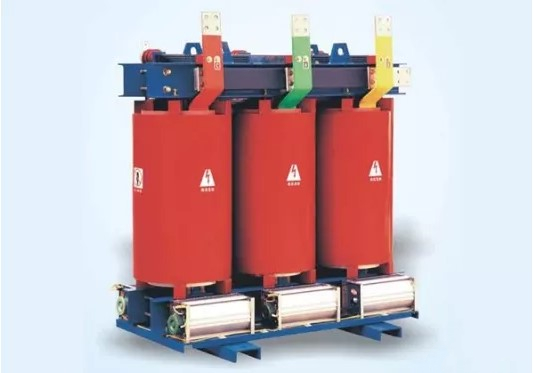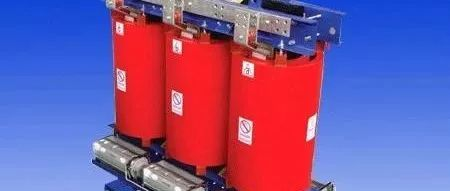You can know every new products be published here, and witness our growth and innovation.
Date:07-26-2021
At present, China’s dry power transformers are mostly three-phase solid forming SC series, such as: SCB9 series three-phase winding transformer, SCB10 series three-phase foil transformer SCB9 series three-phase foil transformer.Its voltage level is generally in the range of 6-35kV, the maximum capacity up to 25MVA.Dry transformer is mainly divided into impregnated dry transformer and resin dry transformer two categories.

1. Impregnated dry type transformer
The wire of the impregnated dry type transformer in China is covered with glass wire, and the pad is hot pressed with the corresponding insulating material. It is mostly used in hydropower stations and high-rise buildings with good fire resistance.

Because of the difference of impregnating paint, transformer insulation is divided into B, F, H, C, main and vertical insulation (main insulation between winding and winding and between winding and core insulation.
Vertical insulation refers to the insulation between different points and different parts of the transformer winding with different potentials, mainly including the insulation performance between turns, layers and sections of the winding.Air is used as the insulating medium.
This kind of transformer is affected by the environment than the resin type dry transformer, the appearance and weight are also larger, the output at home and abroad tend to reduce.
There are end seals at both ends of the winding, not afraid of tide, strong fire resistance, fire prevention in the open fire at 750 ℃, is a relatively new type of dry transformer.1.2 Resin dry type transformer on behalf of today’s domestic resin casting transformer leading products can be divided into the following three categories.
The first type, referred to as wire wound casting transformer, its high voltage is wire wound breaking cylinder casting, low voltage is wire wound cylinder (or segmented cylinder) casting;Li Qian, Shaanxi provincial Electric Power (group) Co., LTD. Note for no filler casting.
The second type, referred to as foil-wound casting transformer, its high voltage is segmented foil-wound casting type, low voltage is copper foil (or aluminum foil) winding type;Casting is cast with filler.
The third type, high pressure for wire wound breaking cylinder pouring type, low pressure copper foil (or aluminum foil) winding type;Casting is cast without filler.
The above three types of products have their own characteristics in the manufacturing and performance of the products, and currently occupy a certain market share in the market. In this article, we focus on the discussion of wire wound pouring transformers.
2. Wire wound cast transformer
2.1. Structural features
In the second power plant of Baoji, Shaanxi province, the dry transformers used in the factory are all wire wrapped pouring transformers, with voltage grade of 6 kV, capacity of 100 kVA to 1600 kVA, and indoor installation.
The high and low voltage windings of the product are made of copper wire, fully wound, glass fiber reinforced, thin insulation, resin without filler, impregnated pouring under vacuum state, and cured according to the specific temperature curing curve.
The high voltage winding adopts special segmented cylinder structure, and the low voltage winding adopts multi-layer cylinder type, segmented cylinder type or special segmented cylinder type according to the voltage level.
2.2 Technical Features
2.2.1 impact resistance wire wound pouring of transformer hv winding adopts special sectional cylindrical structure, this structure is based on common section bobbin winding, ordinary subsection cylinder type both inherited the advantages of bobbin winding impact resistance, and solved the bobbin winding layer of high voltage between the contradiction, is an ideal winding structure,It is often called non-resonant winding structure.
Compared with the ordinary segmented cylinder, the special segmented cylinder can further reduce the voltage between layers, improve the voltage distribution, and greatly improve the impact strength to withstand atmospheric overvoltage and operating overvoltage.
The impact resistance is not only related to the structure of the winding, but also depends on the casting quality of the winding and the electrical properties of the insulating material.
After winding winding of the product is completed, it is poured with pure resin in vacuum state, and no filler is added, so that the flow performance of resin is not reduced.
And because the winding is wound by wire, the resin can completely saturate the winding, no matter from the axial or radial direction of the winding, and there is no bubble inside.
Abstract: This paper introduces the classification and characteristics of dry transformer, and focuses on the structure characteristics of wire wound pouring transformer, technical characteristics, cooling system, temperature control system and so on, summed up the development prospect of dry transformer.Key words: dry transformer;Wire wound casting transformer classification.
Resin and glass fiber composed of solid insulation, not only good impact resistance, and local discharge is very small.
2.2.2. Good mechanical strength and strong short-circuit resistance. For the segmented cylindrical type of wire winding, after vacuum pouring, the resin can be soaked between layers, turns and sections of the winding at one time.
After curing, resin, wire and glass fiber are tightly combined to form a strong rigid body structure.The high strength mechanical properties of the structure determine that the wire wound casting products have good short-circuit resistance.
The thermal expansion coefficient of the composite insulating material formed by curing resin and glass fiber is (18 ~ 20)×10-6/K, and the expansion coefficient of copper used in the winding is 17×10-6/K, which is basically close to the two. It eliminates the mechanical stress between the winding conductor and the insulating material caused by thermal expansion and cold contraction during the operation of the transformer.From the root to eliminate the phenomenon of cracking.
As the product is cast with resin at high and low pressure and the iron core is coated with resin, it has strong moisture and corrosion resistance.When the air relative humidity is 100%, it can still run for a long time.
Because the composite insulation composed of pure resin and glass fiber has extremely high electrical strength, the surface insulation thickness of the product is only 1.5 ~ 2 mm, which greatly improves the heat dissipation efficiency of the winding surface.
2.3. Cooling system and protection
Dry transformers are cooled by natural air cooling and forced air circulation cooling.Natural air cooling is adopted to ensure the normal operation of the transformer under rated load.The dry transformers used in baoji No.2 power plant are all cooled by forced air by radial fan.
After cooling by forced air circulation, the capacity of dry-type transformer with 800 kVA and below can be increased by 40%, and that of dry-type transformer with 800 kVA and above can be increased by 50%, and can run continuously.
Dry type transformer is generally IP00 protection, that is, without shell, indoor use, Baoji second power plant is the use of this protection mode.Also according to user requirements, add protective shell.
The IP20 housing prevents the entry of solid foreign matter greater than 12 mm and provides a barrier to the live parts.When IP23 protection is adopted, besides IP20 protection function, it also has the function of preventing water splashing.
2.4. Temperature control system
The safe and reliable operation and service life of power transformer largely depend on the safe and reliable insulation of transformer winding.The temperature of the winding exceeding the insulation temperature is one of the main reasons that the insulation is destroyed and the transformer cannot work normally.
SC series wire wound casting transformer adopts XMTB automatic temperature control protection system.A platinum thermal resistance temperature measuring element is embedded in the first turn of the low-voltage winding wire to automatically detect the temperature rise of the winding, display the temperature of the three-phase low-voltage winding, and provide thermal protection for them.
With the change of ambient temperature and load, when the winding reaches the limit temperature, the temperature controller will automatically send out a signal to control the fan start (110 ℃), fan stop (90 ℃), alarm (120 ℃) and trip (145 ℃), so that the product has reliable over-load protection in operation.
SC3 series wirewound casting transformers adopt M&C patented technology for temperature detection and control of transformer windings, and produce temperature controller which can directly detect the temperature of the windings, and realize the forced air cooling (AF) control, overtemperature alarm and overtemperature trip of the transformer.
After normal debugging of the temperature controller, the transformer is first put into network operation, and then the temperature controller is energized for operation. The temperature controller is in the state of automatic control, and the temperature detection and protection of the transformer are carried out. When the temperature of the winding is higher than 110 ℃, the temperature controller starts the fan for forced cooling;If the winding temperature drops below 90 ℃ under forced air cooling, the fan stops.
If the temperature of the winding is further increased, the temperature controller will issue an overtemperature alarm (155 ℃) and an overtemperature trip signal (170 ℃).When the temperature controller fails and cannot be removed temporarily, remove the temperature controller, the transformer can continue to operate, only need to monitor and ensure that the transformer is in normal operation state.
3. Comparison between dry transformer and oil-immersed transformer
The significant advantages and low cost of oil-immersed transformers are difficult to replace by other transformers.In the outdoor and fire protection requirements of general places, at present and in the future for a longer period of time, will still be mainly oil immersed transformer.
But for places with high fire protection requirements, dry type or non-flammable liquid and non-flammable liquid transformers are used.The dry transformer has a higher overload capacity than the oil immersed transformer, mainly because the current density of the dry transformer is lower, the heat capacity is large, and the winding time constant is large.
Compared with oil – immersed transformer, the insulation operating condition of dry transformer is improved.Oil immersed transformer use more places, outdoor installation more.
Dry transformer power supply range is small, indoor operation more.Compared with oil-immersed transformers, it suffers from lower lightning voltage amplitude, slower wave head and less lightning strike probability.
Dry transformers are often protected by metal oxide arresters, which not only limit atmospheric overvoltage, but also limit internal overvoltage.